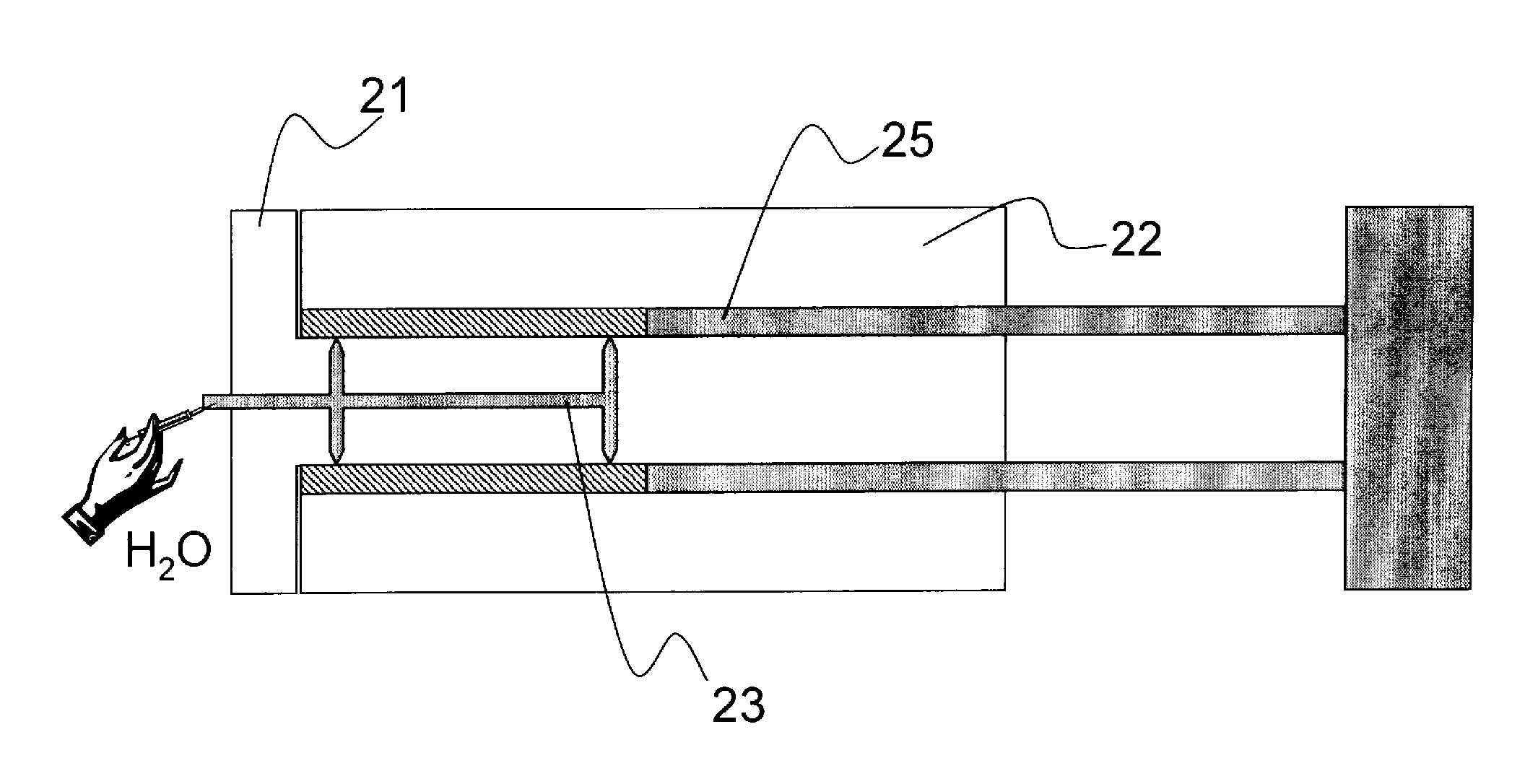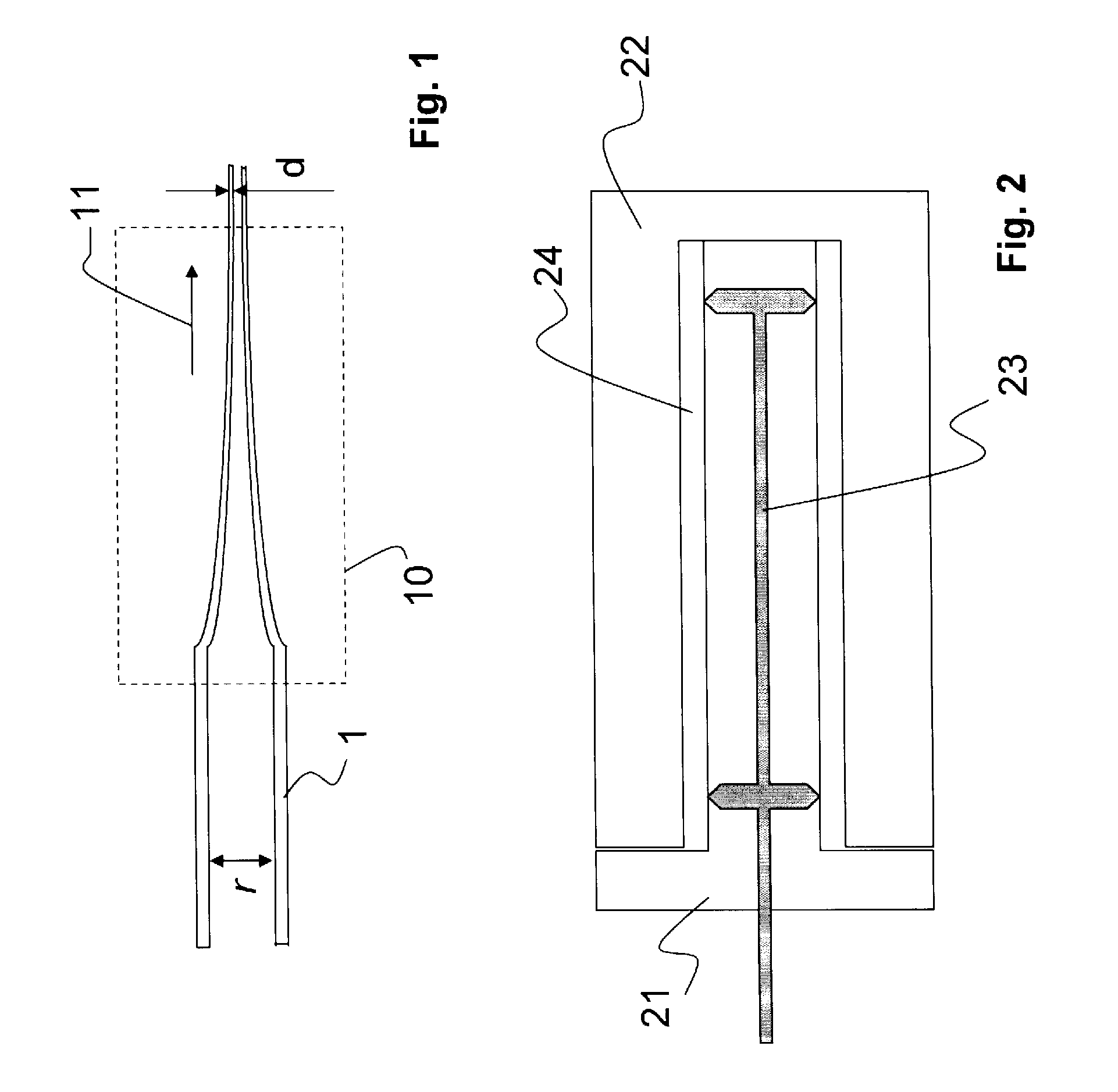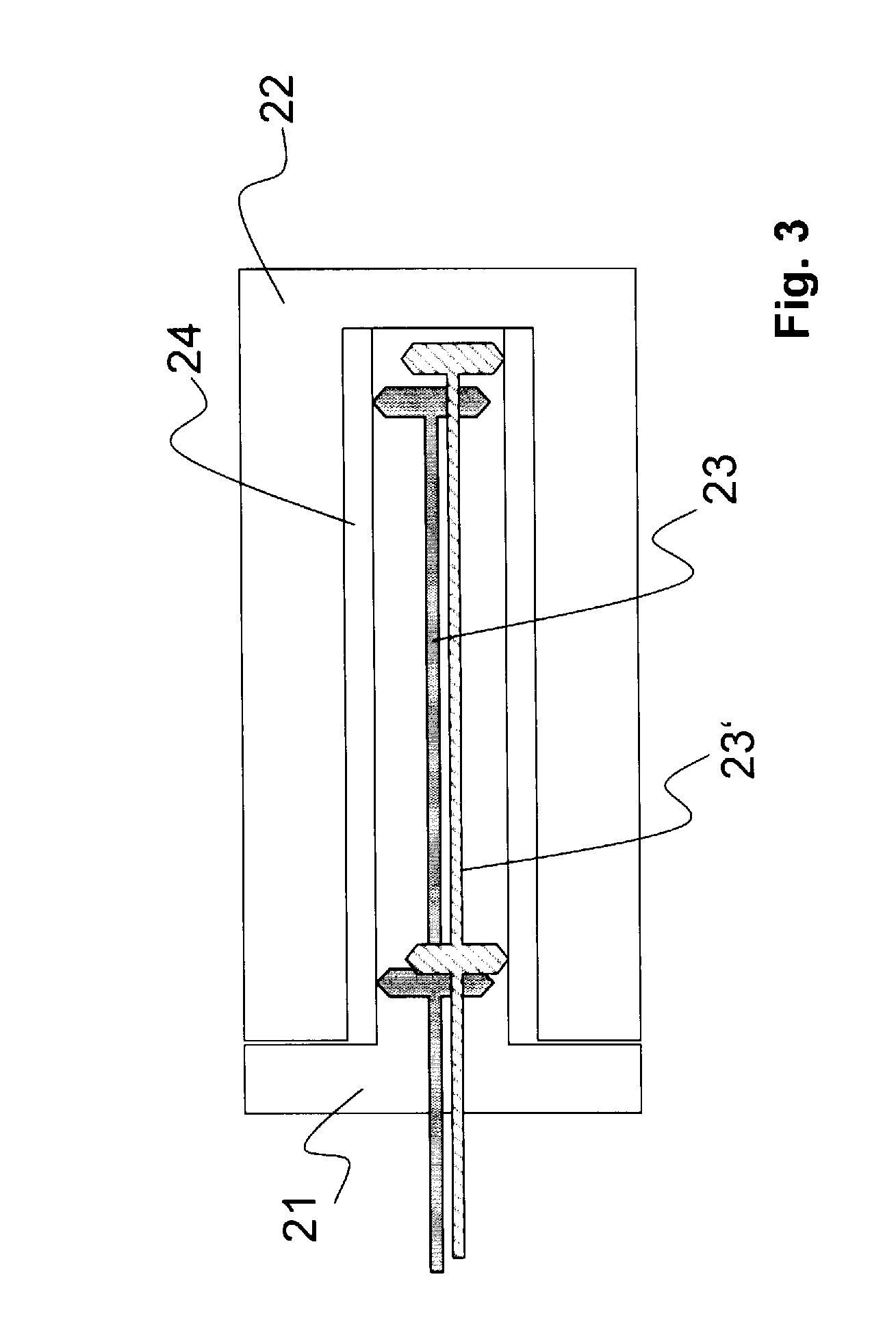Endoprosthesis and Method for Manufacturing Same
a technology of endoprosthesis and manufacturing method, which is applied in the field of intraluminal endoprosthesis, can solve the problems of premature loss of mechanical integrity and stability of implants, reocclusion of stented vascular areas, and risk of restnosis, and achieves the effect of simple and inexpensive methods
- Summary
- Abstract
- Description
- Claims
- Application Information
AI Technical Summary
Benefits of technology
Problems solved by technology
Method used
Image
Examples
example 1
[0039]For production of a stent, a melt is first prepared from a mixture of pulverized polyphosphate and additives having a composition comprising approximately 87 wt % water-insoluble phosphate glass with a P2O5 content of approximately 65-70 wt % and 13 wt % silver iodide, and the thin-walled tube 1 shown in cross section in FIG. 1 is extruded with an inside diameter r of approximately 5 mm and a wall thickness of 0.7 mm, for example. This tube can be drawn out further manually or in a device 10 to form a tube with even thinner walls of a suitable wall thickness d, e.g., a wall thickness d of approximately 150 μm, if necessary, with a suitable temperature program, e.g. by heating over a Bunsen burner until the material becomes drawable. The direction of pulling 11 in the pulling device 10 runs in the direction of the longitudinal axis of the tube. According to the properties typical of the tube material, a suitable stent cutting pattern (design) is drafted with the help of a compu...
example 2
[0040]In a suitable injection molding device with the molded parts 21 and 22 stuck one inside the other as illustrated in FIGS. 2 and 3, a thin-walled tube (hollow cylinder) is shaped from an inventive Sorel cement mixture having a low water content. The hollow cylinder is formed by the hollow cylindrical cavity area 24, which is created between the hollow cylindrical molded part 22 (with a bottom) and the double-cylindrical molded part 21. The Sorel cement mixture is arranged together with additives containing polyphosphates and / or other radiopaque and / or active pharmaceutical substances and / or substances which improve the mechanical properties, e.g., pharmacologically active substances of the substance classes listed above embedded in biopolymers, are arranged in the cavity area 24. By injection of water (H2O) and / or a solution of additives (e.g. MgCl2 solution) into one or more injection channel systems (reference numerals 23 and 23′ in FIGS. 2 to 3), additives are added to the t...
example 3
[0041]In a device according to FIG. 4, a homogenized mixture of powdered anhydrous constituents having the inventive stoichiometry consisting, for example, of approximately 55 wt % of a mixture of MgO, MgCl2 (anhydrous), MgI, (anhydrous) mixture according to formula 1 and a water-insoluble polyphosphate with a P2O5 content of approximately 70 wt % is compressed at a pressure of approximately 100 kg / cm2 (or more) with the help of the tube ram 25 in the tubular cavity 24 formed by the molds 21 and 22 and / or is sintered at temperatures up to approximately 450° C. and then mixed with purified water or a salt solution until the Sorel cement is formed or solidified by subsequent heating and / or moistening to form a stable stent base body. The injection molding device in FIG. 4 corresponds in design to the device shown in FIGS. 2 and 3 except for the tube ram 25.
[0042]It will be apparent to those skilled in the art that numerous modifications and variations of is the described examples and ...
PUM
 Login to View More
Login to View More Abstract
Description
Claims
Application Information
 Login to View More
Login to View More - R&D
- Intellectual Property
- Life Sciences
- Materials
- Tech Scout
- Unparalleled Data Quality
- Higher Quality Content
- 60% Fewer Hallucinations
Browse by: Latest US Patents, China's latest patents, Technical Efficacy Thesaurus, Application Domain, Technology Topic, Popular Technical Reports.
© 2025 PatSnap. All rights reserved.Legal|Privacy policy|Modern Slavery Act Transparency Statement|Sitemap|About US| Contact US: help@patsnap.com



